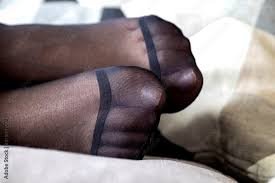Post-surgical recovery requires meticulous planning, and one often-overlooked factor is the selection of the right type of compression stockings toe. Whether you’re recovering from orthopedic surgery, varicose vein procedures, or vascular interventions, choosing between open toe and closed toe compression stockings can have a significant impact on healing, comfort, and long-term outcomes.
In this comprehensive guide, we explore the differences, benefits, indications, and practical considerations for choosing the most suitable stocking toe design after surgery.
Understanding Compression Stockings and Their Role in Recovery
Compression stockings are medical-grade garments designed to apply graduated pressure on the legs to improve blood circulation, reduce swelling, and prevent blood clots like deep vein thrombosis (DVT). They are often prescribed post-surgery, especially after procedures involving the lower limbs or prolonged immobility.
There are two main styles:
- Open toe compression stockings
- Closed toe compression stockings
Each has specific use cases, benefits, and comfort factors that must be weighed carefully for each patient.
Open Toe Compression Stockings: Ideal for Targeted Needs
What Are Open Toe Stockings?
Open toe stockings leave the toes uncovered while providing firm compression starting at the ball of the foot and continuing up the leg. This design allows for improved ventilation, toe inspection, and enhanced foot flexibility.
Post-Surgical Benefits of Open Toe Stockings
- Toe Inspection and Monitoring: After foot or leg surgery, clinicians often need to inspect the toes for signs of circulation, swelling, or discoloration. An open toe design facilitates easy monitoring.
- Improved Ventilation and Comfort: Many patients experience discomfort or overheating in traditional closed-toe designs. Open toe stockings allow air flow, reducing moisture and irritation, especially in warmer climates.
- Easier Application: Patients with bunions, hammertoes, or bandaged toes often find it easier to wear open toe designs without added pressure or constriction.
- Ideal for Wound Access: In cases where post-operative wounds, stitches, or dressings are located near the toes, open toe designs provide unhindered access for dressing changes.
Best Use Cases for Open Toe Designs
- Post-varicose vein surgery
- Foot or toe surgeries
- Diabetic foot management
- Patients prone to overheating or sweating
- People with wide feet or toe deformities
Closed Toe Compression Stockings: Comprehensive Foot Coverage
What Are Closed Toe Stockings?
Closed toe compression stockings fully encase the foot, including the toes, mimicking the look and feel of regular socks. They are the traditional design and are widely used for uniform compression therapy.
Advantages of Closed Toe Stockings in Recovery
- Full Foot Compression: Closed toe stockings offer even compression across the entire foot, which is beneficial for edema management or lymphedema affecting the toes.
- Cold Weather Comfort: In cooler environments, closed toe stockings provide warmth and comfort, preventing chills during prolonged periods of rest or limited mobility.
- Enhanced Aesthetics: For many, closed toe designs resemble regular hosiery or socks, making them more discreet under clothing, especially for outpatient recovery.
- Foot Protection: Post-operative feet are often vulnerable. Closed toe designs help protect the skin from external contaminants and abrasions.
Best Use Cases for Closed Toe Designs
- Post-orthopedic leg surgery
- Lymphedema with foot involvement
- Post-thrombotic syndrome (PTS)
- Chronic venous insufficiency with edema
- Cold or sensitive foot conditions
Clinical Recommendations: Matching Stocking Toe Type to Recovery Need
Post-Surgical Considerations
When selecting a toe design, clinical indicators must guide the decision. Factors to assess include:
- Surgical site location (e.g., foot vs. thigh)
- Patient sensitivity or existing foot conditions
- Need for frequent foot assessments
- Climate and environmental comfort
Open toe compression stockings are typically preferred immediately post-op when monitoring is crucial. As the healing progresses and full-foot compression becomes beneficial, transitioning to a closed toe stocking might be recommended.
Consulting with a Vascular Specialist or Surgeon
Healthcare providers may tailor recommendations based on:
- Compression class (e.g., 15–20 mmHg, 20–30 mmHg, etc.)
- Daily wear duration
- Patient mobility levels
- Foot shape and comorbidities like diabetes or neuropathy
Sizing and Fit: A Critical Factor in Effective Compression
Regardless of the toe type, proper sizing ensures maximum efficacy and comfort. Ill-fitting stockings can cause:
- Tourniquet effect (especially with closed toe if too tight)
- Rolling or slippage
- Impaired circulation
Key Sizing Guidelines
- Measure ankle, calf, and thigh circumference (depending on stocking length)
- Measure leg length from heel to knee or thigh
- Choose open toe if measurements fall near size limits to accommodate foot freedom
Most manufacturers offer sizing charts; custom-fitted options are also available for post-surgical patients with complex needs.
Material and Fabric Choices
Post-surgical stockings come in a variety of materials:
- Nylon-spandex blends for moderate compression and breathability
- Cotton-lined options for sensitive skin
- Silicone band tops to prevent rolling (especially for thigh-high models)
Open toe variants are often preferred in natural fiber blends for enhanced airflow and hypoallergenic properties.
Patient Experience and Feedback: Comfort Matters
Long-term compliance with compression therapy hinges on patient comfort. Open toe designs often score higher in:
- Ease of donning
- Breathability
- Footwear versatility (can be worn with sandals)
Meanwhile, closed toe stockings receive favorable feedback for:
- Daily wear use
- Winter comfort
- Full protection of foot and toes
Final Verdict: Open Toe vs. Closed Toe – Which Should You Choose?
There’s no one-size-fits-all answer. We recommend:
- Open Toe for immediate post-surgery, foot inspection, warmer climates, or specific foot conditions.
- Closed Toe for colder weather, foot swelling, and long-term compression needs.
Always consult with your healthcare provider before making a final decision. Compression therapy is most effective when it’s both clinically appropriate and comfortable.
Where to Buy Quality Post-Surgery Compression Stockings
Look for medical-grade brands that provide:
- Multiple compression classes (15–20, 20–30, 30–40 mmHg)
- Both open and closed toe options
- Wide range of sizes and lengths
- Soft, durable, and breathable materials
Top recommended brands include Sigvaris, JOBST, Medi, and Juzo—available through medical supply stores, hospitals, or reputable online retailers.


